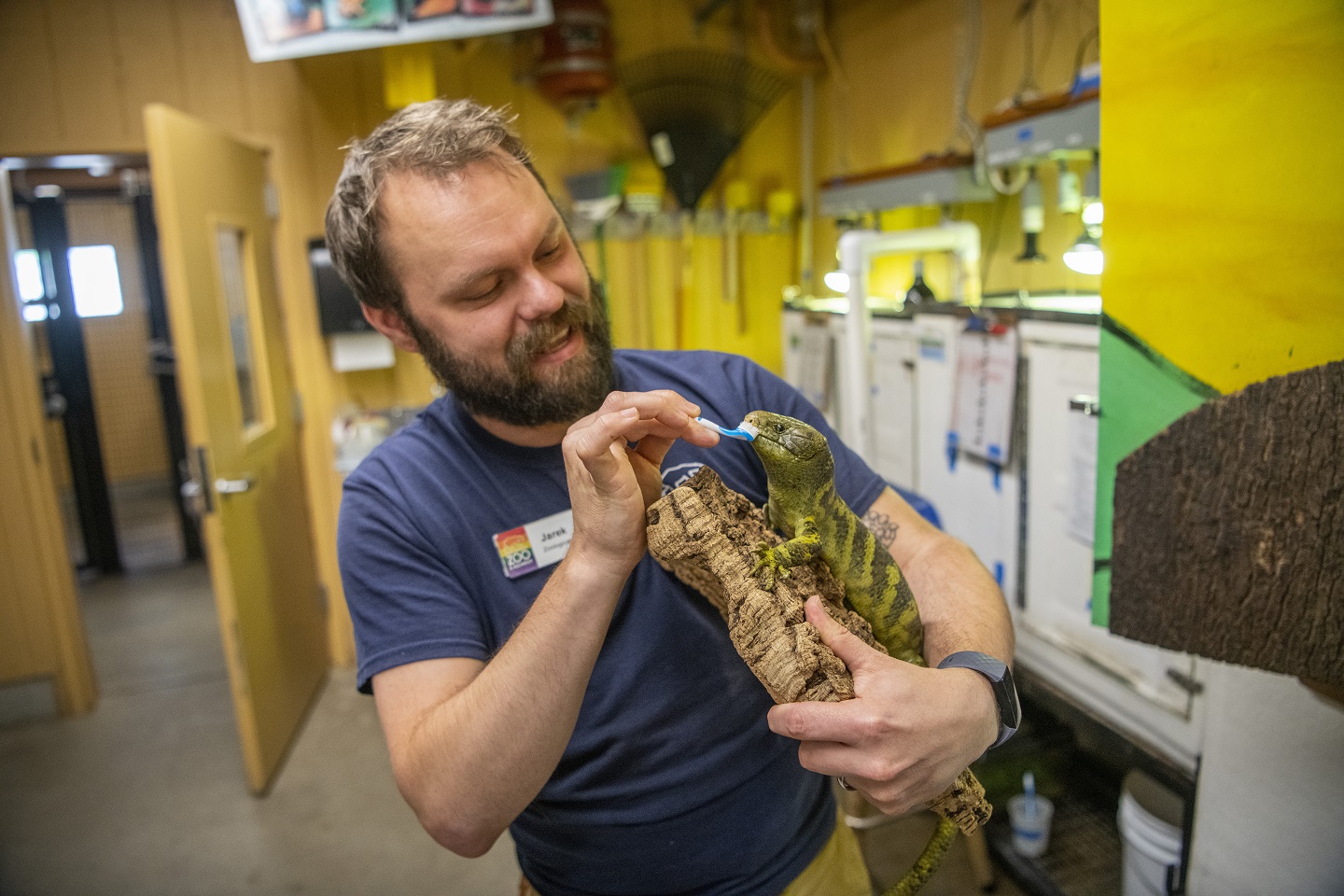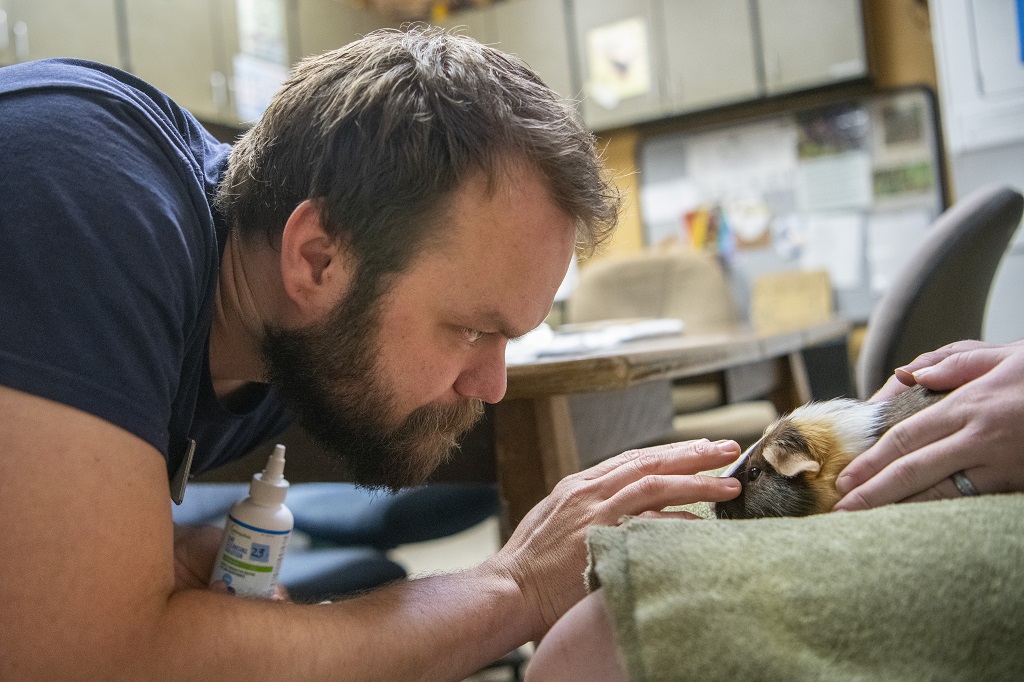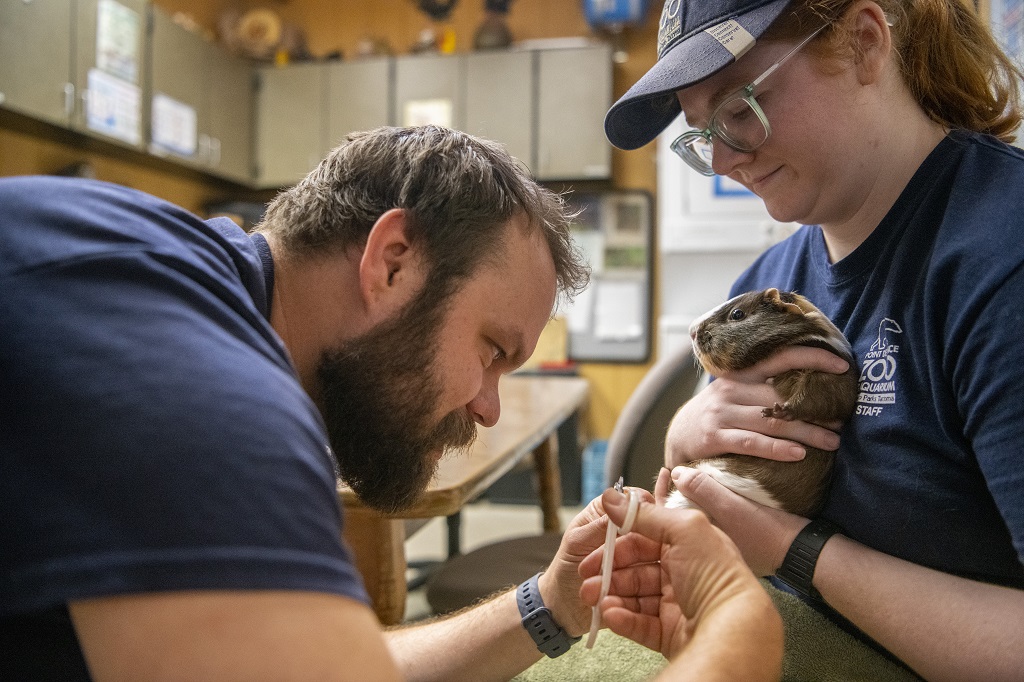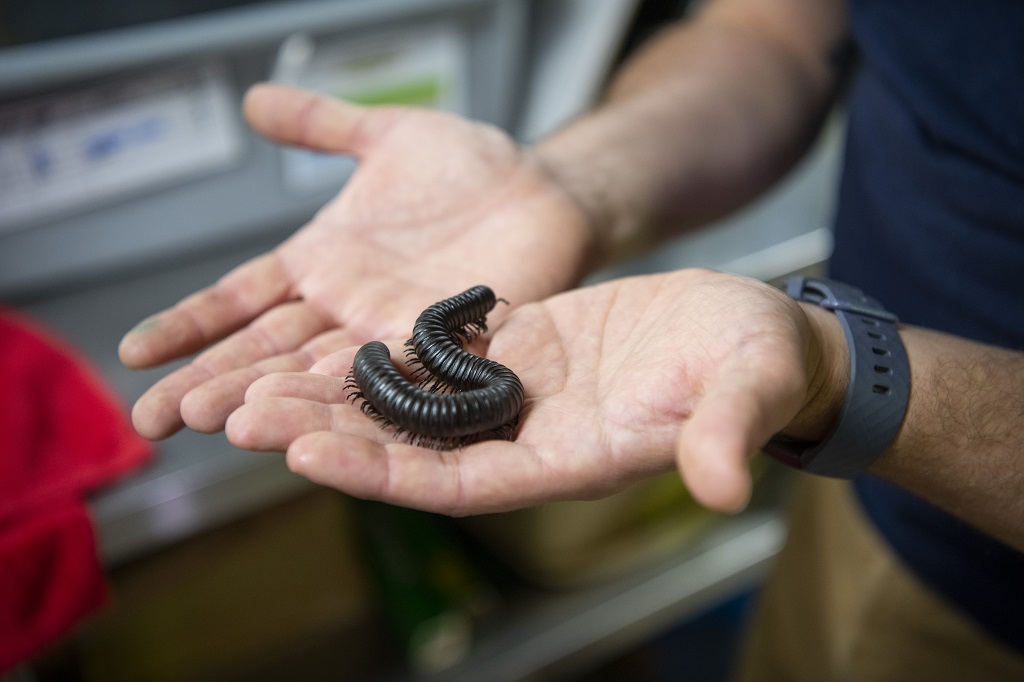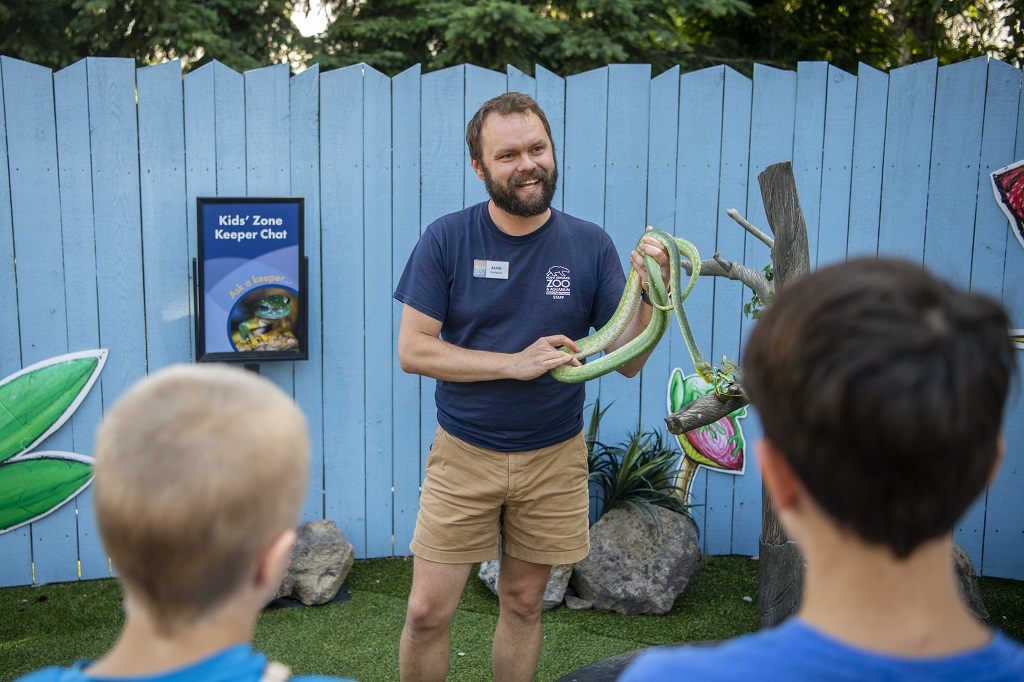This Zookeeper Week, we shadowed Jarek, a zookeeper at Point Defiance Zoo & Aquarium. Jarek works with the animals at Kids’ Zone. He is also the coordinator of the Association of Zoos and Aquariums (AZA) Safety Web for Arthropod Reproduction and Management (SWARM) program for millipedes. We asked him about his experiences in zookeeping and what working with animals and wildlife means to him.
Q: What is your favorite part of the job?
A: I love the variety of animals I work with; it’s what drew me to Kids’ Zone. I get to go from working with goats to piranhas, scorpions to guinea pigs, millipedes to snakes—so many great animals to learn about and care for.
Q: What is your favorite animal at the Zoo?
A: Picking a favorite is not easy because it changes all the time. One animal that I keep coming back to is our guinea pig, Strudel. As a domestic species, guinea pigs have taught me a lot. I became a zookeeper because of exotic animals, but domestic animals have their place in educating people on why they are good pet choices and how to care for them. Since guinea pigs are domestic, they are very personable, and you can engage them like a pet and treat them differently than you would meerkats and lemurs, for example. Strudel is not at the top of the social hierarchy of guinea pigs here at the Zoo, and because of that—along with her being so cute—I feel like she needs a lot of love.
Q: What was your journey to becoming a keeper? What inspired you to become a keeper?
A: I loved animals and had so many pets as a kid. Growing up, my favorite place was the Denver Zoo. However, I never considered zookeeping as a career until college. I had a friend who interned here at the Zoo, which helped me realize that I could also do that! I got my biology degree and started at the aquarium as an intern. Shortly after, I transferred to the education department, followed by the Wild Wonders Outdoor Theater. I was trying to determine what aspect of working here called to me the most. The diverse collection alongside the outreach-based education we give at Kids’ Zone is the combination I was looking for.
Q: What does your day typically look like?
A: We start with a morning meeting, where we divide up our tasks. The bulk of the morning is husbandry or caring for the animals: feeding, cleaning and providing any necessary medications. Then we will switch to the tasks that are required weekly or monthly; an example would be cleaning the piranha filter or trimming goat hooves. The rest of the day is filled with animal care and public interaction. Between the red wolf keeper chat, Critter Corner presentations, and our unscheduled appearances, I will be out at least once a day giving a keeper chat and engaging with our guests.
Q: What is something people wouldn’t expect about your job?
A: What type of water do you give a frog? How do you breed scorpions? Do you know how to trim a goat hoof? Animal keepers need a lot of highly specialized knowledge. Staying educated and informed about each species in our care is a must, both to care for the animals properly and to educate our guests about each species. Being a zookeeper is more than handling animals and picking up poop.
Q: What advice would you give someone who wants to be a zookeeper?
A: There is no singular path to take. I started as an intern and bounced around to different areas of the Zoo, which helped me learn how things worked here. It also helped me figure out what interested me the most and what animals I wanted to work with. My advice would be to volunteer or get an internship, get your foot in the door, and keep at it.
If you’d like to meet Jarek, catch him during a keeper chat in the Kids’ Zone area.
